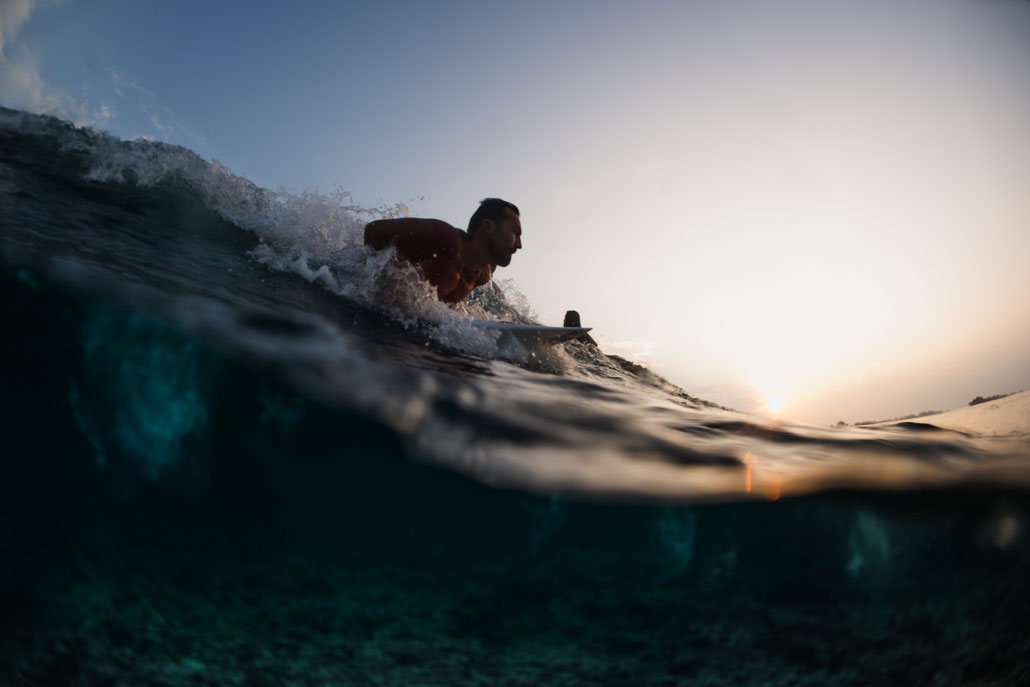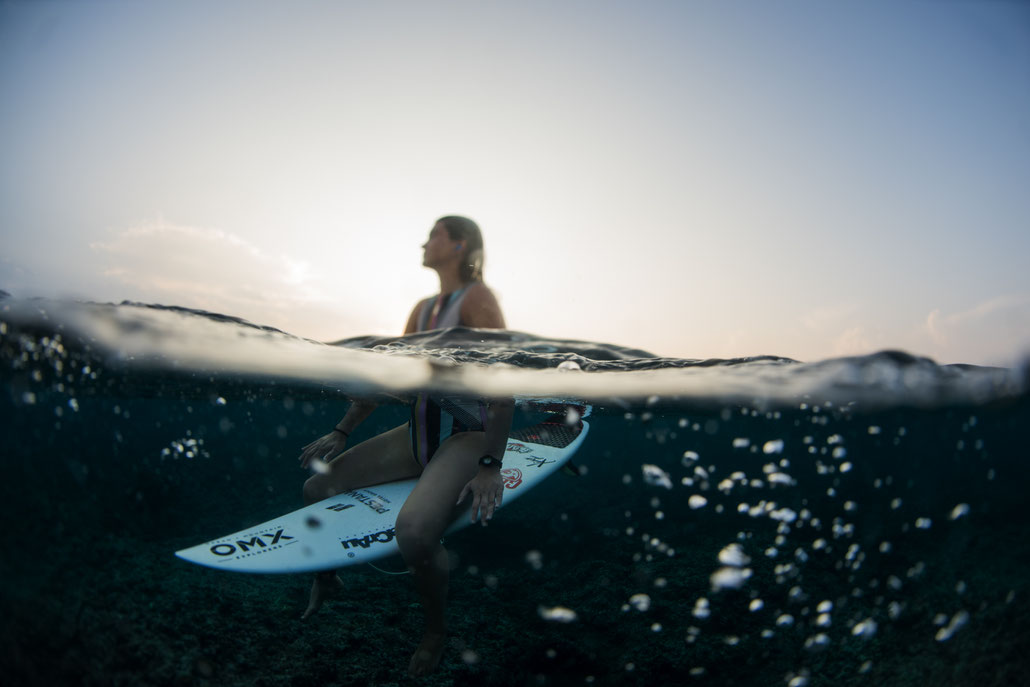No single correct way but many wrong ways.
There is no one correct way to go from prone to standing on a surfboard. Surfers all pop up differently, some plant the rear foot first, while others plant their feet simultaneously. JWC workS as best as possible with your personal technique and tries to adapt a technique that suits your body type, hip flexibility, agility and strength. In some cases we might go back to the very basics of 1,2,3 technique.
What is of paramount importance that we achieve a smooth, fluid and consistent technique. Reduce major uncontrolled weight distribution changes that translate to the surf board and the line you drop the wave. With an inconsistent pop up you can forget about seeing your surf technique progress at the rate you expect.
Key point; smooth consistency.
I describe the perfect stand up technique as "cat like ninja", heavy explosive movements = lack of control and huge weight transitions that seem to always equal an arm shooting out to help counter balance. Good agility is fundamental; and the positive news is this can be worked on out of the surf through home or gym training techniques and flexibility routines.
Key point; agility.
Agility is the ability to change the body's position efficiently, and requires the integration of isolated movement skills using a combination of balance, coordination, speed, reflexes, strength and endurance.

Look down the line, where you look you go.
Generally in surfing where you look you go. Ask yourself how many times you have practiced the pop up technique at home or on the beach and looked down to see where your feet are on the sand. Ask yourself how often do you read the trough of the wave to signal when to pop up? You are practicing poor technique, look down go down.
You need your vision to be looking down the line of the wave in the direction you wish to travel. This affects your shoulder and torso position, whilst giving you time to read the physics of the wave. With this information your body subtly shifts its weight distribution between nose to tail and rail to rail affecting the line your surfboard will drop the wave, way before you even think to put your hands on the rail to initiate a pop up.
Surfing is all intuition based on your comprehension with in a few seconds of what the wave is going to do down the line, not what it is doing. The line you take on take off determines your angle, speed, drive and rail engagement. A good consistent "cat like ninja take off" equals consistent foot positioning and stance, an awareness of wave dynamics and effective line equals more advanced surfing options.
But let's pull it back again to basics, repetition is key but only if you repeat good technique. Thousands of repetitions can equally create perfect technique as much as poor technique.
Repeating good technique creates an instinctive movement pattern and muscle memory with the added advantage of increased strength and agility. It is why I tell my clients to warm up by popping up with good technique, when they have a few moments spare in the office practice my pop up drill techniques, always practice looking down the line.
Create a subconscious movement habit.
There is very little time to "think" whilst catching a wave but just "do". A good analogy is a boxer hitting the pads with good technique, starting combinations slowly and building each set of repetitions with speed. Can you remember Karate Kid? Mr Myagi...wax on wax off..until the movement becomes hard wired.
Key point; drill, repeat, drill again.
Advanced surfing (and popping up), is built upon foundations of whether or not your body can move well. Does your ankle have an adequate range of motion? Do you have enough core control and lower abdominal strength to stabilise the pelvis so that there is a “platform” of control for you to whip your hips underneath you? The ability to move through joints and the ability to control those movements with strength lay the foundations for the cat like ninja pop up.
Train to surf.
If you don't train to repeat technique through drills or accompanying strength and flexibility training, it’s quite possible you will stiffen and develop mobility limitations negatively affecting your pop up, and other aspects of your surfing.
Any skilled movement in life and sport requires certain physical attributes in varying amounts. The pop up requires certain amounts of joint mobility, aspects of strength, bits of power, and layered on skill. If your hips can’t move, then your skill is likely severely limited. A tight and restricted hip limits your ability to pull your leg underneath your body. This forces you to bend the torso forward, likely too far, so it’s throwing your weight forward and causing you to fall over your toe side rail.
Key point; good mobility training benefits skill and technique.
The skill is improved through repetitive practice so that it becomes efficiently engrained in the body, hardwired. Your aim is to eliminate movement limitations so you can work on the skill unimpeded by a body that doesn’t move well. This is the point at which actual pop up practice on dry land is highly beneficial. Drill the skill.

Surfing is mental, just breathe.
If you are overwhelmed by other surfers on the main peak and suffer anxiety about your surfing you are going to seriously affect your learning curve.
My advice on this is to find your own quiet peak, can be less quality, chose a surfboard that gives you more time and paddling speed...foamies are perfect for this or generally speaking longer and narrower (but this is a topic for another blog).
Whilst spotting your wave take five deep inhalations and twice as long exhalations. Try slow everything down, visualise catching and surfing a wave. This practice can also be introduced at home or anywhere you can relax and mind surf.
- Match a breathing rhythm with the stand up technique;
- Breathe in hands on rail
- Breathe out bring feet under the torso to position on board
- Breathe in as you engage rail and rise up the wave face
- Breathe out compress
- Breathe in deep bottom turn
- Breathe out explosive top turn
If you’re frustrated with your pop ups, or simply want surf with better technique hit the #Clicj2Rip button for information about surf video analysis coaching sessions in Portugal, the Maldives and Madagascar.

